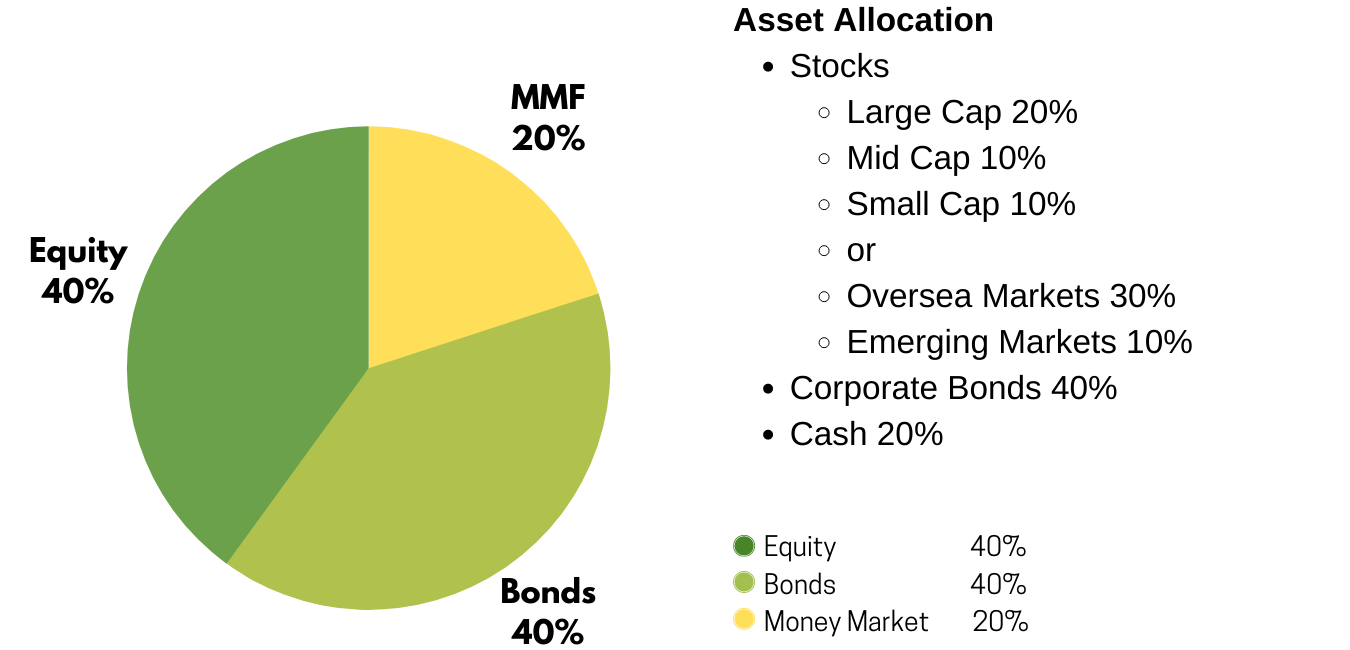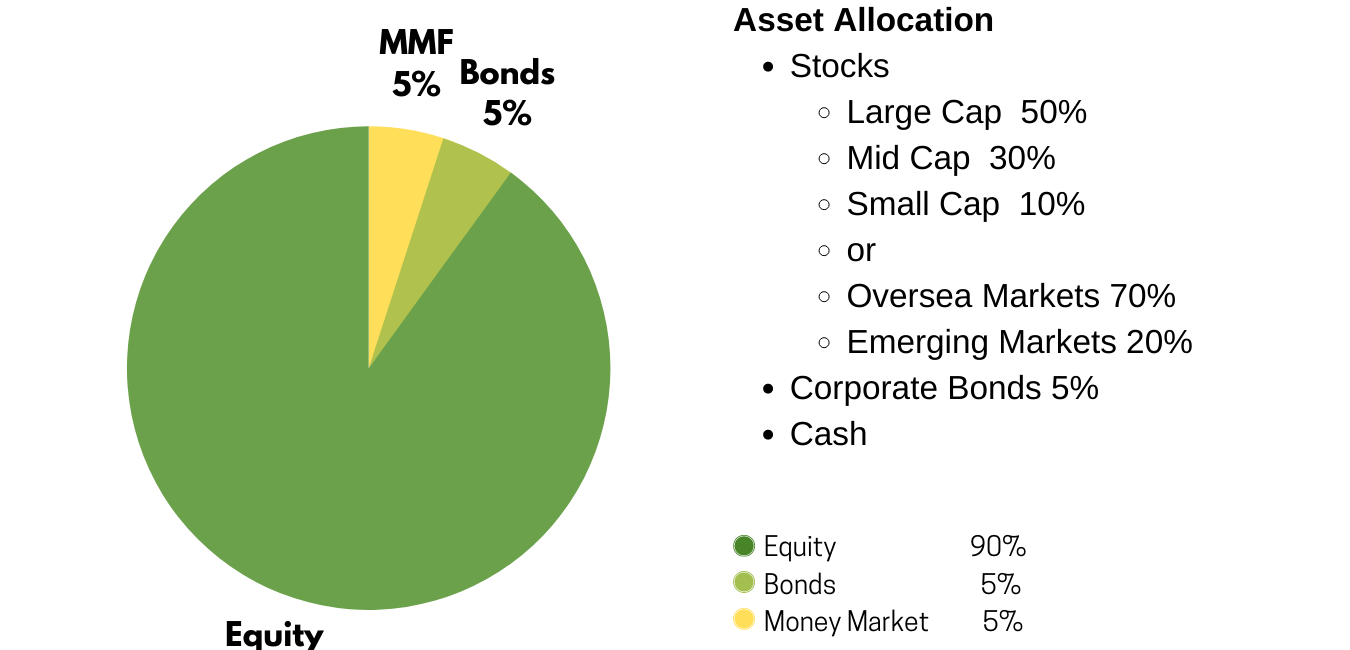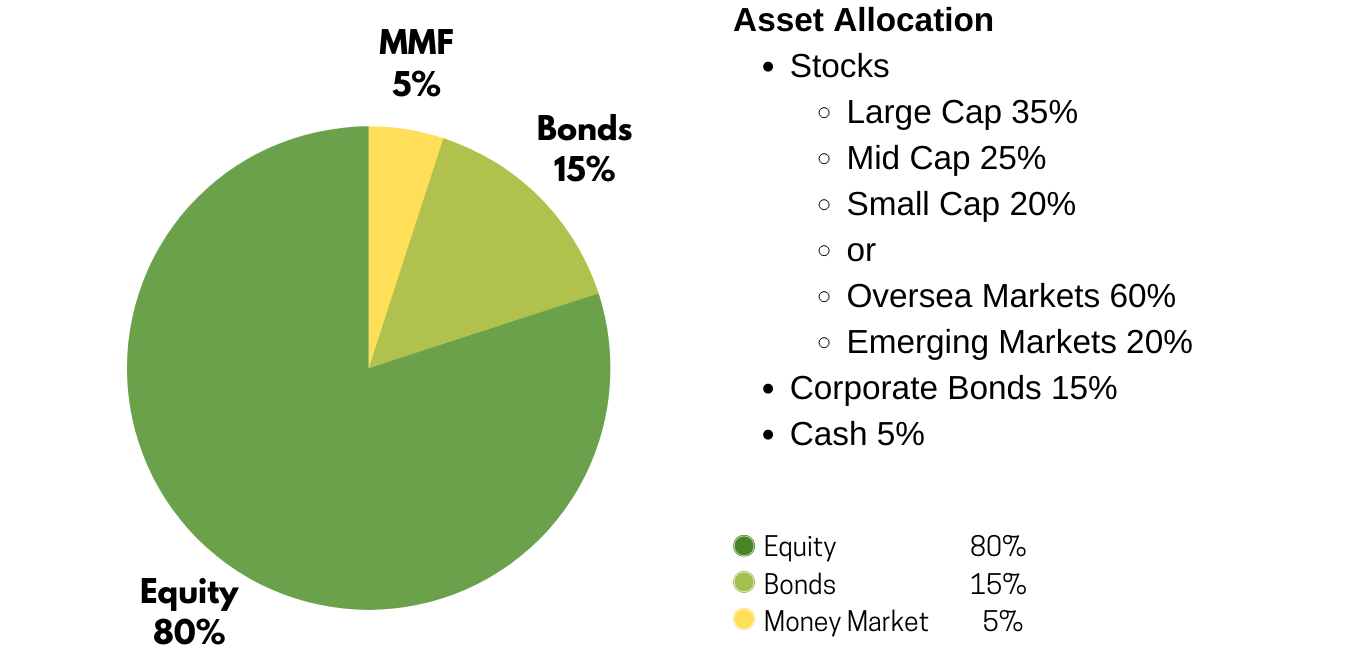Select a profile that’s right for you. The profiles below will help you tailor your allocations to align with your risk tolerance.
Asset Allocation Calculator
Conservative
 Typically, a conservative investor is:
Typically, a conservative investor is:
- willing and able to accept some risk or volatility
- primarily focused on pursuing a modest level of portfolio appreciation with minimal principal loss and volatility
- someone with a portfolio that primarily includes investments in cash and bonds with some allocation inequities
Moderate
 Typically, a moderate investor is:
Typically, a moderate investor is:
- looking for a balance between portfolio stability and portfolio appreciation
- willing and able to accept a moderate level of risk and return
- an investor focused on growth but looking for greater diversification
- someone with a portfolio that primarily includes a balance of investments in bonds and equities
Aggressive
Typically, an aggressive investor is:
- primarily focused on pursuing portfolio appreciation over time
- usually an experienced equity investor
- can tolerate market downturns and volatility for the possibility of achieving greater long-term gains
- someone who won’t need the money from their investments for 10 years or more
- someone with a portfolio that has exposure to various asset classes but is primarily invested in equities
Very Aggressive
 Typically, a very aggressive investor is:
Typically, a very aggressive investor is:
- primarily focused on pursuing above-average portfolio appreciation over time
- someone who can tolerate higher degrees of fluctuation in the value of his investments
- someone with high return expectations
- someone who won’t need the money from their investments for 15 years or more
- someone with a portfolio that has exposure to various asset classes but will be heavily invested in equities
What Is Asset Allocation?
Asset allocation means spreading your investments across various asset classes. Broadly speaking, that means a mix of stocks, bonds, and cash or money market securities.
Within these three classes, there are subclasses:
- Large-cap stocks: Usually industry and sector leaders and represent well-known, established companies.
- Mid-cap stocks: Stocks of companies with medium-size market capitalizations or valuations.
- Small-cap stocks: Stocks of small companies that are projected to grow faster than other small-cap stocks. These equities tend to have a higher risk due to their lower liquidity.
- Emerging markets: Securities issued by companies in developing nations. These investments offer a high potential return and a high risk due to their potential for country risk and their lower liquidity.
- Bond/Fixed-income securities: Highly rated corporate or government bonds that pay the holder a set amount of interest, periodically or at maturity, and return the principal at the end of the period, these securities are less volatile and less risky than stocks.
- Money market: Investments in short-term debt, typically a year or less. Malaysian Treasury Bills (MTB) and Malaysian Government Securities (MGS)are the most common money market investment.
- Real estate investment trusts (REITs): Shares in an investor pool of mortgages or properties.
How to Achieve Optimal Asset Allocation
Maximizing Return and Risk
Asset allocation is a broad strategy that determines the mix of assets to hold in a portfolio for an optimal risk-return balance based on an investor’s risk profile and financial goals.

